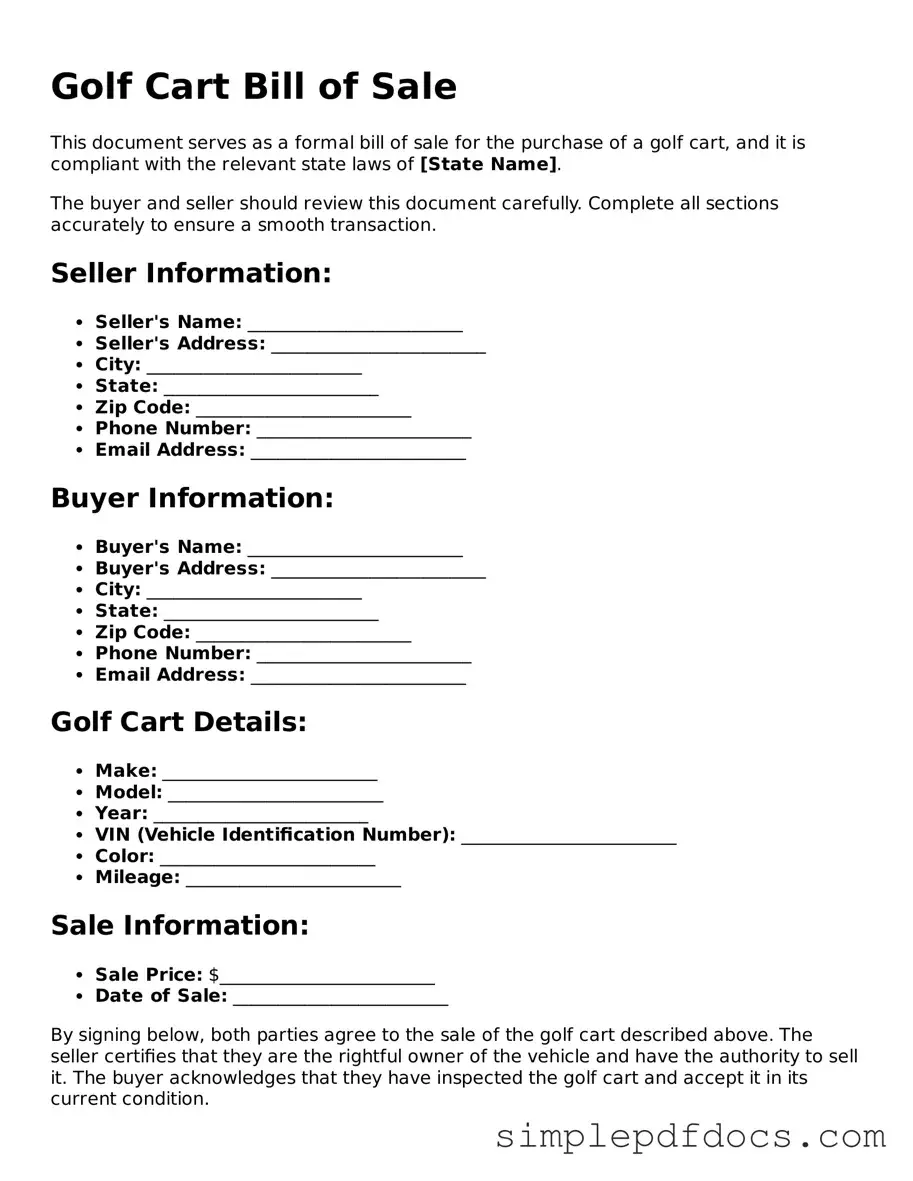Attorney-Approved Golf Cart Bill of Sale Form
A Golf Cart Bill of Sale is a legal document that records the transfer of ownership of a golf cart from one party to another. This form serves as proof of the transaction and outlines essential details such as the buyer, seller, and the golf cart's specifications. Understanding this document is crucial for ensuring a smooth transfer and protecting both parties' interests.
Get Document Here
